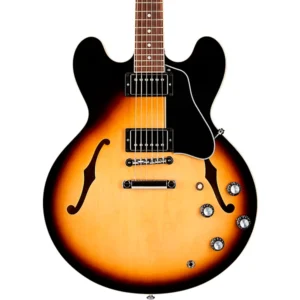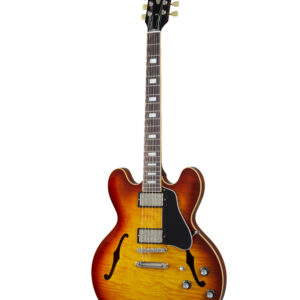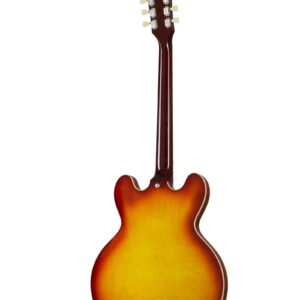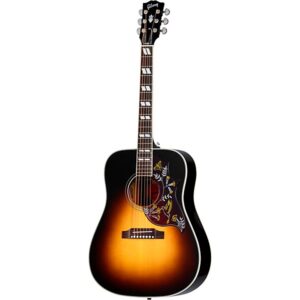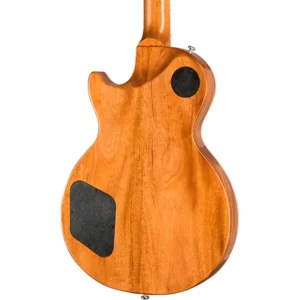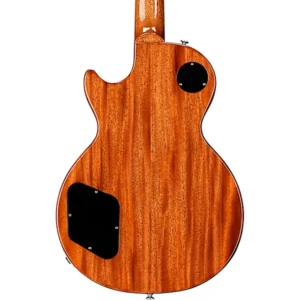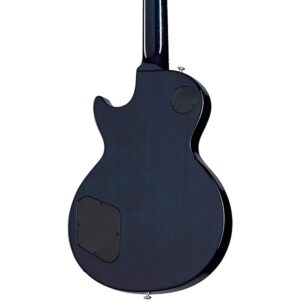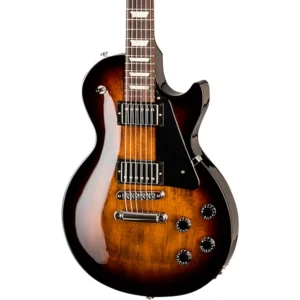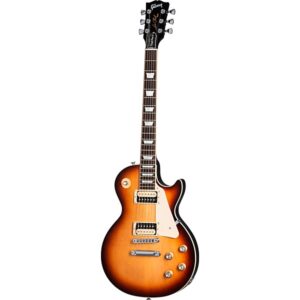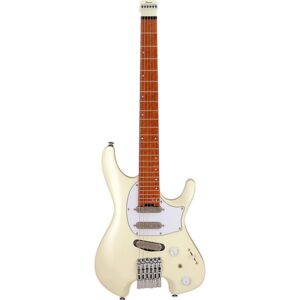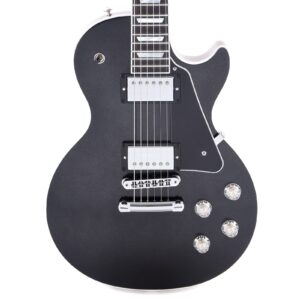Electric Guitars For Sale
Electric stringed instruments are often played by wearing them over the shoulder (or balanced on the knee), fretting with one hand and plucking or strumming with the other. When the strings are struck, magnetic pickups pick up the sound and send it to an amplifier, which amplifies it. They’ve been popular in music since the mid-nineteenth century.
Why Should I Choose an Electric Guitar?
- Great Fun for Lead or Rhythm
- Gives you a powerful Amplified Sound
- Can cover countless styles
Showing 1–12 of 59 results
Showing 1–12 of 59 results
Best Electric Guitars Online
Despite its enormous popularity during the 1950s and 1960s rock ‘n’ roll era, the electric guitar was conceived in 1931. The amplified guitar became necessary during the Big Band Era as orchestras grew in size, especially when guitars had to compete with big brass sections.
Hollow archtop acoustic guitar bodies with electromagnetic transducers were the first electric guitars used in jazz. An electrically amplified guitar was commercially available by 1932.
Rickenbacker in 1932, Dobro in 1933, National, Epiphone, and Gibson in 1935, and many others by 1936 were among the early electric guitar producers.
Despite the fact that the Gibson 2016 line was just created, Gibson’s first production electric guitar, marketed in 1936, was the ES-150 model (“ES” for “Electric Spanish” and “150” signifying the instrument’s $150 price).
Walt Fuller invented the single-coil, hexagonally shaped pickup for the ES-150 guitar. It was dubbed the “Charlie Christian” pickup after the legendary jazz guitarist who was among the first to perform on the ES-150. The ES-150 was well-liked, but it suffered from inconsistent loudness throughout the six strings.
The electric guitar has subsequently grown into a stringed musical instrument capable of a wide range of sounds and styles, and has played an important role in the creation of rock ‘n’ roll and many other musical genres.
Cheap Electric Guitars
Electric guitars are our favorite topic at guitarguitar.com. Our staff is enthusiastic about them, and each of our stores is stocked with a diverse variety of the world’s best and most popular electric guitars.
We have something for everyone, whether you want a solid body, semi-acoustic, or hollow body guitar, or a 7 string or 8 string.
We are authorized dealers for some of the most well-known electric guitar brands, including Gibson, Ibanez, Fender, Epiphone, and PRS, as well as some of their most iconic models, such as the Gibson Les Paul and Fender Telecaster.
We also carry a wide selection of electric guitars from Schecter, Rickenbacker, Gretsch, Solar, Chapman, and ESP. We provide a large selection of boutique and custom instruments by Tyler, LSL, and Nik Huber.
Our electrics come in a variety of colors, ranging from conventional black to more uncommon options like pink. You can even go for a sparkle guitar if you want to be daring, or a relic guitar if you prefer a classic aesthetic! We also carry left handed guitars and 3/4 sized electric guitars, which are ideal for younger players.
Metal and Rock, as well as Blues, Pop, Jazz, and Indie, are all catered to. Whether you’re new to the world of electric guitars or seeking for the holy grail of your collection, guitarguitar.com is the place to be.
If you’re looking for electric guitars for beginners, we have a wonderful selection to help you get started. We also have a wonderful collection of affordable electric guitars, which are ideal for the budget-conscious player. A black, patterned, or leather guitar strap will complete your electric guitar.
Which is the Best Electric Guitar for Beginners?
The best electric guitar for beginners is one that is not unduly expensive, is comfortable for the player, has good quality construction, and inspires the user to play! We recommend looking into starting guitar kits, which include a guitar, an amplifier, a strap, wires, and, in some cases, a lesson book.
Types of Electric Guitars
Electric guitars are mainly classified into three types. There are three of them: hollowbody, semi-hollowbody, and solid body. Hollowbody electrics are direct descendants of the earliest electrics, which were made by attaching pickups to archtop guitars.
Some models, such as Gibson’s ES-175, Gretsch Electromatic, and Ibanez Georg Benson, have pickups directly positioned in the top. Others, such as Godin’s Fifth Avenue Jazz, feature “floating” pickups that are linked to the pickguard but not to the top. All of these are commonly referred to as “jazz boxes,” but they are also utilized in other genres.
Solid-body electrics first appeared in the late 1940s and can be as simple as a slab of wood with pickups, such as the Telecaster, or contoured and/or carved, such as the Stratocaster or Les Paul. The electronics are contained within the body.
The third group is the most recent, having been established in the late 1950s. Semi-hollowbody guitars, which combined the feedback resistance of a solid-body instrument with the warm resonance of a hollowbody, were a groundbreaking concept at the time.
The Gibson ES-335 and its descendants, the ES-345, ES-355, and, more recently, the ES-339, a smaller-body variation, remain the most notable examples.
Solidbody
Les Paul invented one of the first solid-body guitars, yet Gibson did not show their Les Paul guitar prototypes to the public because they did not feel it would catch on.
Fender’s Broadcaster (later called the Telecaster) was the first mass-produced solid-body guitar, introduced in 1948, five years after Les Paul’s prototype. Soon after, the Gibson Les Paul appeared to compete with the Broadcaster.
The Fender Stratocaster, which was released in 1954 and became immensely famous among artists in the 1960s and 1970s due to its wide tonal capabilities and comfortable ergonomics, is another notable solid-body design.
Chambered Body
Some solid-body guitars, such as the Gibson Les Paul Supreme, PRS Singlecut, and Fender Telecaster Thinline, have hollows in the body. These hollows are specifically constructed to avoid interfering with the solid body’s key bridge and string anchor point. The motivation for this can be weight loss, achieving a semi-hollow tone, or both.
Semi-hollowbody
These guitars function similarly to solid-body electric guitars, except that the pickups translate a mix of string and body vibration into an electrical signal since the hollow body vibrates as well. Semi-hollowbodies are known for their ability to produce sweet, mournful, or funky tones.
They can be heard in a variety of genres, including blues, funk, 1960s pop, and indie rock. They typically have cello-style F-shaped sound holes, which can be sealed off to minimize feedback, like in B.B. King’s well-known Lucille.
Full Hollowbody
Full hollow-body guitars have big, deep, completely hollow bodies and can typically be played at the same loudness as an acoustic guitar, allowing them to be used unplugged at intimate gigs.
The instrument was invented during the jazz era of the 1920s and 1930s and is still regarded as the archetypal jazz guitar, dubbed the “jazzbox.”
They frequently have f-shaped sound holes, similar to semi-hollow guitars. Jazzboxes, which include humbucker pickups (often only a neck pickup) and are frequently strung heavily, are known for their warm, rich tone.
A version with single-coil pickups and often a Bigsby tremolo (popular in country and rockabilly) has a noticeably more twangy, biting tone than the conventional jazzbox.
How Much do Electric Guitars Usually Cost?
There is no one-size-fits-all solution. Prices vary depending on brand, building quality, and other considerations. Electric guitar prices often range from $100 for an entry-level instrument to several thousands of dollars for collectors pieces.
What is the Electric Guitar Made Out of?
Electric guitars can be made out of a variety of materials, but most guitars are made out of a wood such as ash, mahogany, maple, sitka spruce, and more.
What makes a good electric guitar?
What is the best electric guitar to learn on?
How much does a decent electric guitar cost?
What is an acoustic electric guitar?
What type of electric guitar should I buy first?
If you’re looking for your first electric guitar, a solid body is the most common’standard’ choice. If your favorite musicians utilize semi-hollow or hollow-body guitars, there’s no reason you can’t start with one as well if you want to mimic their sound!
What do you need Before Buying Electric Guitar?
If you go electric, you’ll probably need a tiny amp, new strings, a guitar strap, and a metronome…things you will undoubtedly require once you begin taking classes.
Can we play electric guitar without amp?
The electric guitar can only generate a microcurrent, so pretending you can play without amplification is pointless, but you don’t need to carry an amp along anymore. I practice without an amp the most of the time. A decent electric guitar will perform admirably on its own.
How Long Does it take to Self Learn Electric Guitar?
While it is feasible to learn the fundamentals of guitar playing in three months, one should not expect to become a competent guitarist in that time. However, between 6 – 24 months, you should be able to learn your primary chords and barre chords, as well as make chord changes easily.
Can you Learn Electric Guitar Without a Teacher?
It is possible to learn to play the guitar without the assistance of an instructor. In truth, some of the best guitarists, such as Jimi Hendrix, were self-taught for the most of their lives. Remember that just because something is conceivable does not mean it is simple. So prepare for the voyage, take your time, work hard, and most importantly, have fun.
What is the Difference Between Guitar and Electric Guitar?
It is possible to learn to play the guitar without the assistance of an instructor. In truth, some of the best guitarists, such as Jimi Hendrix, were self-taught for the most of their lives. Remember that just because something is conceivable does not mean it is simple. So prepare for the voyage, take your time, work hard, and most importantly, have fun.






